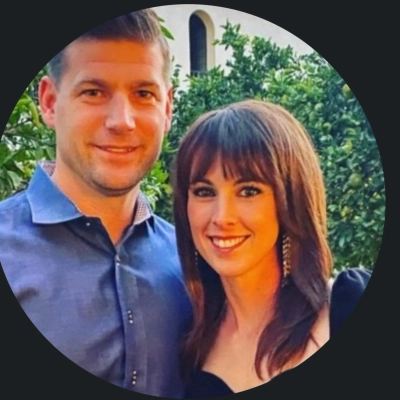8 Employee Recognition Programs: Success Metrics and HR Recommendations
Employee recognition programs are a cornerstone of successful workplace cultures, but what makes them truly effective? This article delves into the key metrics and strategies that drive successful recognition initiatives, drawing on insights from industry experts and HR professionals. From peer-driven recognition to personalized rewards, discover the elements that can boost morale, enhance engagement, and foster long-term loyalty in your organization.
- Peer Spotlight Boosts Morale and Retention
- Personalized Rewards Drive Employee Engagement
- Work Anniversary Celebrations Increase Retention
- Peer-Driven Recognition Enhances Company Culture
- Professional Growth Programs Foster Long-Term Loyalty
- Simple Peer Nominations Build Authentic Camaraderie
- Customer Feedback Recognition Improves Service Quality
- Celebrating Personal Bests Encourages Self-Improvement
Peer Spotlight Boosts Morale and Retention
At My Biz Niche, the recognition program that's had the biggest impact is our newsletter's 'Peer Spotlight,' which we hold once a month. Instead of leaders being the only ones giving praise, we encourage teammates to nominate each other for the everyday contributions that make a difference. Whether it's helping a colleague through a tough project, mentoring someone new, or simply spreading positivity in the office, we make sure the appreciation is broadcast through our communication channels.
We've seen incredible participation, with most of our team taking part each month, and our surveys show higher morale and a stronger sense of belonging since we started. It's also reflected in how much happier people are to stay and grow with us.
My advice to other HR professionals is to keep recognition simple, sincere, and employee-driven. When people feel seen and appreciated by their peers, it creates a culture of kindness and connection that no formal program alone can match.
Lauren Byrne
Co-Owner and Head of HR
My Biz Niche

Personalized Rewards Drive Employee Engagement
At Level 6, I've seen firsthand how personalized rewards drive employee engagement. Every team is unique, and recognizing individual contributions in a meaningful way makes a difference. By offering customized rewards such as wellness experiences or digital gift cards, we create moments that genuinely resonate with employees, reinforcing the value of their efforts. Combining employee rewards with customer rebate initiatives allows us to celebrate achievements while aligning with broader organizational objectives.
We measure the success of these programs using multiple indicators. Employee feedback and satisfaction surveys give us qualitative insights, while retention rates and participation numbers provide quantitative data. Tracking these metrics helps us understand which rewards motivate employees most effectively, and it informs the ongoing refinement of our programs.
My recommendation for other HR professionals is simple: Focus on personalization. Recognize employees in ways that matter to them, not just what is convenient. When incentives reflect individual preferences and accomplishments, participation increases, morale improves, and your workforce feels valued. Coupled with strategically designed customer rebate programs, this approach strengthens both internal and external relationships.
Work Anniversary Celebrations Increase Retention
The most effective employee recognition program I've implemented was our work anniversary celebration. This program included personalized handwritten notes from our entire leadership team along with an extra paid day off. We found that employees truly appreciated this approach because it demonstrated genuine recognition from senior leadership while also providing meaningful time off to celebrate their commitment to our organization. Success was measured primarily through employee feedback and retention rates following the implementation of this program.

Peer-Driven Recognition Enhances Company Culture
The most effective recognition program I've implemented wasn't flashy or expensive—it was consistent, peer-driven, and tied directly to values. Instead of relying solely on top-down recognition from managers, we created a system where employees could nominate each other for small but meaningful contributions. The focus wasn't just on hitting big targets, but on moments of collaboration, creativity, and leadership in the everyday flow of work.
The program worked because it was simple. Anyone could submit a quick nomination highlighting what a colleague did and why it mattered. Every month, a handful of stories were spotlighted in team meetings and internal channels. Sometimes the recognition came with small rewards, but more often the real value was the visibility and appreciation. Employees loved hearing how their efforts impacted others across the business, and it built a culture where recognition felt authentic rather than transactional.
Measuring success was straightforward. Engagement surveys showed a clear jump in employees feeling valued and connected to the company's mission. Voluntary turnover declined, particularly among high performers, and internal mobility increased—people wanted to stay and grow in an environment where they felt seen. Even productivity metrics nudged upward, but the deeper win was cultural: people spoke up more, collaborated more freely, and morale improved in tangible ways.
What I'd recommend to other HR professionals is to focus less on extravagant perks and more on creating structures that make recognition part of daily life. Peer-to-peer recognition works because it distributes the power of appreciation, and tying it to core values keeps it aligned with the organization's goals. When recognition is authentic, frequent, and inclusive, it stops being a "program" and starts becoming part of how people work together.
Professional Growth Programs Foster Long-Term Loyalty
The most effective recognition programs we've introduced focus on professional growth rather than awards. We began covering the costs of certifications and specialized training for employees who demonstrate initiative or assume new responsibilities. Instead of just saying "good job," we invest in helping them advance their skills and careers. This has turned recognition into something that has lasting value, not just a moment of praise.
We track participation and follow-up outcomes—such as promotions, increased retention, and internal referrals—and the results have been strong. Employees who took advantage of the program were more likely to stay with us long-term and often mentored others. My advice to HR professionals is to make recognition meaningful by connecting it to personal development. When people see that their effort leads to growth, it builds loyalty and motivation far beyond any short-term incentive.

Simple Peer Nominations Build Authentic Camaraderie
One of the most effective recognition programs I implemented wasn't flashy—it was a peer-nominated "Above and Beyond" shout-out we introduced during our Monday standups. Employees could nominate a colleague who went out of their way to help, solve a tough issue, or just showed exceptional ownership. We kept it simple: a quick story, a round of applause, and a $25 gift card. What made it work was that it came from peers, not just management. That authenticity fostered a great deal of camaraderie.
We measured success by tracking participation and engagement—not just the number of people nominated, but also the frequency with which people nominated others. Within a few months, we observed increased cross-departmental collaboration and a noticeable improvement in employee satisfaction scores on our quarterly surveys. My advice to other HR professionals: don't overthink it. Recognition doesn't need to be expensive or formal—just timely, consistent, and genuine. When your team starts celebrating one another, that's when culture begins to take shape.
Customer Feedback Recognition Improves Service Quality
We've implemented our "Customer Shout-Out" initiative. Whenever a customer mentions a technician or staff member by name in a review or survey, we highlight it in our weekly meeting and reward that employee with a small bonus or gift card. It's simple, yet it connects recognition directly to real customer experiences, making it feel genuine and meaningful. Over time, it's helped reinforce the kind of service we want to be known for.
We are measuring its success by tracking review volume, customer retention, and internal engagement scores. Positive mentions have increased, turnover has decreased, and it's clear that employees take pride in being publicly recognized. My advice to HR professionals is to keep recognition personal and tied to company values—people remember appreciation that feels sincere more than significant, one-time incentives.

Celebrating Personal Bests Encourages Self-Improvement
A recognition program we've introduced isn't about praise—it's about progress. We started tracking and celebrating "personal bests," like fastest route completion with perfect service scores or most five-star reviews in a month. Every milestone is publicly acknowledged, but instead of prizes, recognition comes in the form of a short one-on-one meeting where we ask what helped them improve and what support they need next. It turns recognition into a coaching moment, not just a pat on the back.
Through performance consistency and employee-led problem solving, we measured success. Once people saw that recognition was tied directly to growth opportunities, motivation shifted from competing with coworkers to improving themselves. For other HR professionals, I'd say: don't just reward results—reward the process that builds them. It makes recognition feel more meaningful and sustainable.





